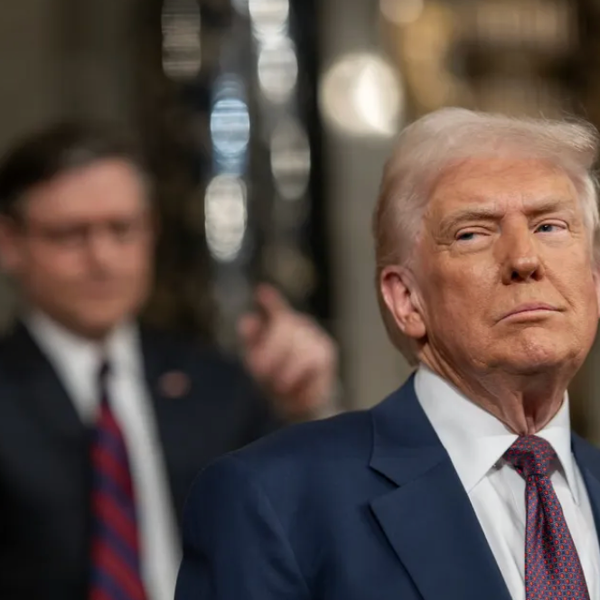Weekend Reader: ‘Machine Made: Tammany Hall And The Creation Of Modern American Politics’

Today the Weekend Reader presents Machine Made: Tammany Hall and the Creation of Modern American Politics by Terry Golway, a journalist and historian whose career spans three decades writing for The New York Observer, The New York Times, The Boston Globe, and American Heritage. Golway, who currently teaches at Kean University in New Jersey and is the author of several books on Irish and American history, offers enlightening insight into a crucial time in our politics — beginning with the fateful influx of Irish immigrants into New York.
You can purchase the book here.
The history of early twentieth-century New York is defined not by a political campaign or an election but by a fire, the terrible blaze that killed 146 workers, mostly young Jewish and Italian women, in the Triangle Shirtwaist Factory on March 25, 1911. For Tammany, for the labor movement, for the burgeoning campaign for women’s rights—even, some argue, for the nation itself—the Triangle fire has been considered a critical turning point, the tragic inspiration for the creation of a new social contract that foreshadowed the New Deal, which was put in place by a man who served in the New York State Senate at the time of the fire, Franklin D. Roosevelt.
The Triangle fire surely did represent a milestone for Tammany Hall, for two of its promising young members, Robert Wagner and Al Smith, led a state investigation that brought together professional reformers, including a young social worker and lobbyist named Frances Perkins, and pragmatic politicians in an alliance that would have seemed highly unlikely only a few years earlier. The leadership of Wagner and Smith—carried out with the blessing of [Tammany boss Charles] Murphy—seemed to represent a sudden, uncharacteristic, and perhaps even opportunistic change of priorities for Tammany. It wasn’t, but it certainly would have seemed so to New York newspaper readers, who had become accustomed to breathless accounts of Tammany’s evil intentions and Murphy’s Croker-like appetite for plunder and Tweed-like enjoyment of the good life at his favorite restaurant, Delmonico’s, where he held court in a private room decorated with heavy red rugs and mahogany furniture. Hearst’s newspapers portrayed Murphy in prison stripes, an overstuffed convict-in-waiting.
In fact, Murphy and individual members of Tammany had been moving the organization toward the cause of reform—or, more to the point, to a new kind of reform shorn of its evangelical moralism—well before the Triangle fire. Tammany’s John Ahearn might have passed legislation to grant pensions to poor mothers in 1897 were it not for the opposition of reformers who opposed the distribution of cash indiscriminately to the poor. Tammany continued to turn left in the years immediately following the close call with Hearst’s Municipal Ownership League. Governor Hughes had more trouble with his fellow Republicans than he did with Murphy’s Tammany when he sought to create a public-service commission to regulate utilities in 1907. But Hughes, a prototypical reformer, blocked New York’s ratification of the Sixteenth Amendment, which authorized a federal income tax. The amendment, widely viewed as one of the era’s most progressive achievements, passed the state legislature only after Tammany took control of Albany in 1911, over the fierce objections of some of the state’s most prominent residents, including John D. Rockefeller, members of the Morgan family, and Joseph Choate, corporate lawyer, former ambassador to Great Britain, and regular denouncer of Tammany Hall’s “mongrel” tickets. Robert Wagner framed the amendment as a truly progressive reform, arguing that the tax would “lighten the burdens of the poor.”
Under Murphy’s leadership in the second decade of the twentieth century, Tammany redefined reform as a pragmatic, lunch-bucket form of liberalism stripped of the Progressive Era’s moral pieties and evangelical roots. Liberated from the defensiveness that marked its rhetoric and actions during much of the nineteenth century, Tammany finally developed a forward-looking agenda that one historian described as “the creation of a quasi-welfare state.” Murphy’s allies supported and implemented sweeping new social legislation—from workers’ compensation to the beginnings of minimum-wage laws to stricter regulation of businesses, making New York a hothouse of progressive reform long before the New Deal.
Some observers simply could not reconcile these actions with their image of Tammany. Journalist M. A. Werner, in his often-cited history of Tammany, was so convinced of the organization’s evil that he could see nothing good coming of anyone connected to the organization. According to Werner, Big Tim Sullivan, the powerful Tammany leader who ruled the Bowery as a personal fiefdom, authored one of the nation’s first gun-control laws in 1911 not because he was appalled by the growth of gun violence but because he wanted to plant weapons on gangsters and pimps who refused to pay bribes to Tammany. Werner complained that Sullivan’s seemingly progressive law prevented “citizens from protecting themselves from thieves. . . . ” A century after its passage, Sullivan’s Law remains on the books in New York.
Other reformers were more open-minded, and came to understand what Tammany was trying to accomplish. Frances Perkins, who came of age politically in Albany during Murphy’s tenure and went on to become the first woman cabinet secretary in U.S. history, once said of Big Tim Sullivan and his cousin Christopher, “If I had been a man serving in the Senate with them, I’m sure I would have had a glass of beer with them and gotten them to tell me what times were like on the old Bowery.”
Perkins recognized in Murphy’s Tammany a change that her future boss, Franklin Roosevelt, did not perceive until years later. Tammany’s support for social-welfare and regulatory legislation in the early twentieth century was, she wrote, “a turning point” in changing “American political attitudes and policies toward social responsibility.” Jeremiah Mahoney, the son of Irish immigrants and law partner of Robert Wagner, was drawn to Tammany politics because he believed it could become a vehicle for pragmatic social and economic change. Mahoney said that he and other young protégés of Murphy “made the [Democratic] party a liberal progressive party, and we advocated the cause of the underprivileged [and] the cause of labor.”
This new approach certainly was not perfect, as Perkins learned when Murphy at first blocked and then sought to thwart a bill that would have limited the workweek for women and children to fifty-four hours. The legislation never made it out of committee in 1911 because Murphy sought to protect allies who owned candy factories that employed many women and children. A year later, Murphy allowed the measure to come to a vote in the State Senate on the last day of the legislative session, but he saw to it that canneries—factories where vegetables and fruit were placed in cans, sealed, and shipped to stores—were exempt. He believed Perkins and her allies would never agree to the measure, but, after a long talk with Big Tim Sullivan, Perkins decided to accept what she could get—in essence sacrificing several thousand cannery workers for the sake of the four hundred thousand women who worked in other industries.
Sullivan explained why he supported the measure despite Murphy’s opposition. “My sister was a poor girl and she went out to work when she was young,” he told Perkins. “I feel kinda sorry for them poor girls . . . I’d like to do them a good turn.”
Sullivan and his cousin Christopher, also a legislator, left Albany before the vote, believing the deal was done. They were wrong, for Murphy ordered Wagner to kill the measure through parliamentary procedures, outraging other Tammany figures, including Thomas McManus, the bill’s sponsor in the Senate. When Perkins found out, she got word to the Sullivan cousins, who rushed back to the chamber in time to outmaneuver Wagner and cast the deciding votes in favor of the bill. McManus was the not-so-quiet hero of the episode, holding the floor with a long speech while the Sullivans rode to the rescue.
Perkins’s allies were furious with the compromise, but Perkins, learning quickly from tutors like Big Tim Sullivan, came to the realization that legislation did not pass simply because it was worthy, and that compromise was not necessarily corrupt. The lessons Sullivan imparted to Perkins were timely—Big Tim died a year later, in 1913, after months of mental instability. His body was found on a railroad track in the Bronx.
If you enjoyed this excerpt you can purchase the full book here.
Excerpted from Machine Made: Tammany Hall and the Creation of Modern American Politics by Terry Golway. Copyright © 2014 by Terry Golway. With permission of the publisher, W. W. Norton & Company, Inc.








